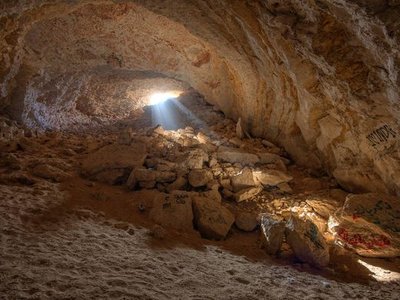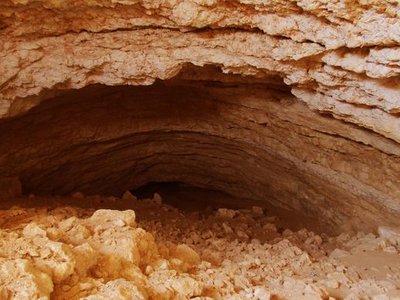Musfur Sinkhole


The Musfur Sinkhole was formed
an estimated 325,000 to 500,000 years ago. The opening is about 40 feet wide and plunges over 300 feet down into the earth, making it the largest sinkhole in
Qatar.
Unlike many sinkholes, there are no bats living inside this giant cave, but migratory birds regularly build their nests high along the jagged layers of limestone and gypsum. The ancient sinkhole is also crawling with bugs native to Qatar but in a highly concentrated number, pointing at an ecosystem inside the hole that is quite different from the one found on the surface.
Sinkholes are common throughout the eastern part of the Arabian Peninsula, where the terrain is particularly conducive to these phenomena. The whole region is characterized by karst, a geological term referring to the underground layer of land that can easily dissolve when water trickles down from the surface, forming cavities. When these cavities grow in size and can no longer support the land surface, a collapse may occur and a sinkhole is formed.
Rainfall in the region is relatively negligible nowadays, but during the Middle Pleistocene period, heavy rainfalls were common, and this is the time when Musfur Sinkhole probably formed. Other factors also affect the way sinkholes are formed (like temperature change, topsoil structure, flora, and fauna), but water is definitely the most determining factor, as it directly dissolves limestone and gypsum.
While there is also a cave a few miles from Musfur, this is a standalone sinkhole, and it is not itself connected to other caves.